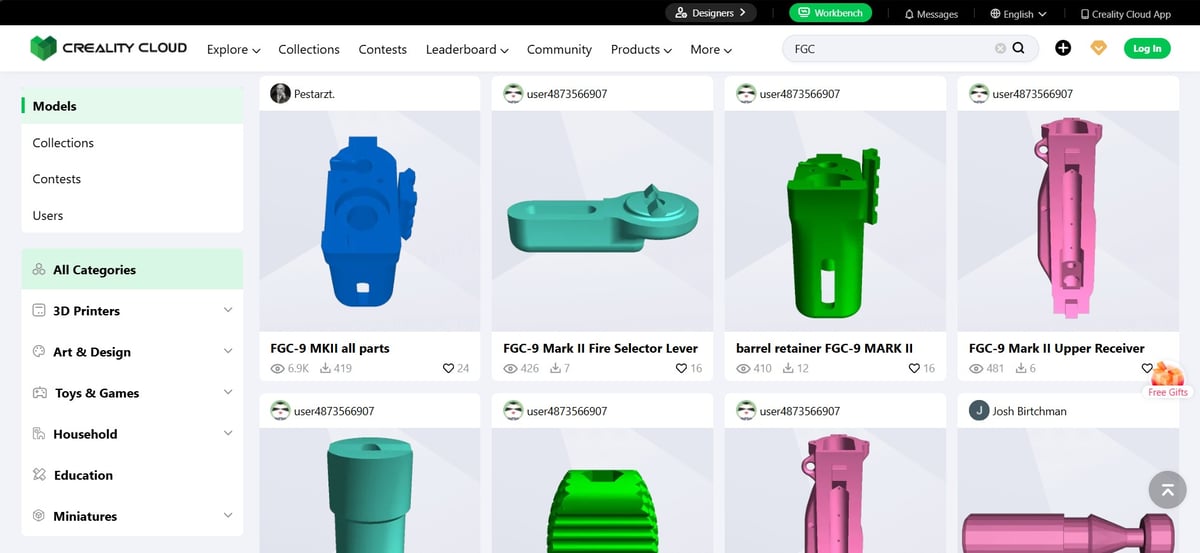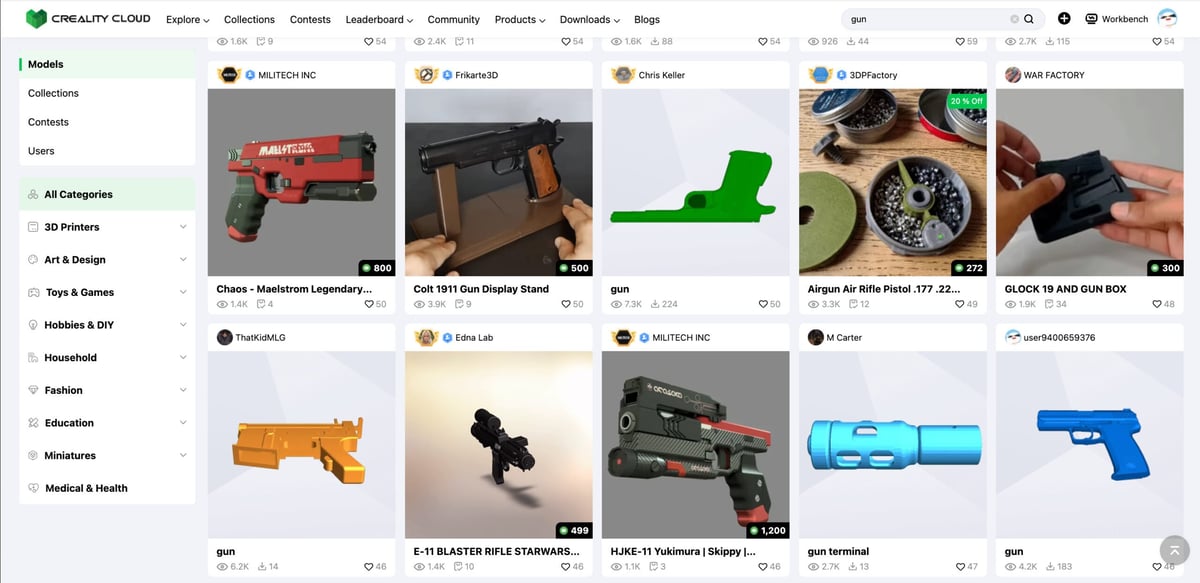Adun Ao, the CEO of 3D printer manufacturer Creality, received a letter this week from Manhattan District Attorney Alvin Bragg urging him to embed security features into all Creality printers that would detect and ban printing gun-part files. “Additionally,” the letter continued, “it is paramount that you work to remove weaponry from your company’s cloud services and explicitly ban the creation of illicit weapons in your company’s user agreement.”
China-based Creality is one of the world’s largest manufacturers of hobby-level 3D printers used by millions worldwide. The company was singled out among the hundreds of companies that manufacture desktop 3D printers by DA Bragg because investigations by the N.Y. Police Department into individuals who 3D print illegal weapons revealed that they use Creality 3D printers, according to the District Attorney’s letter.

Earlier this month, N.Y. City Mayor Eric Adams announced the removal of more than 1,000 illegal firearms from city streets since the beginning of the year. Some of these were ghost guns — untraceable weapons with no serial numbers assembled using components purchased as kits, separate pieces, or 3D printed in part or in full.
Ghost guns have become a hot political topic as they sit at the intersection of gun rights, public safety, and emerging technology. Advances in 3D printing have made it easier for anyone to manufacture a functional firearm.
On the same day that Bragg dragged Creality to the center stage of the city’s gun problem, the U.S. Supreme Court upheld a 2021 law, affirming that unfinished firearm parts and gun kits can be classified as firearms under the Gun Control Act of 1968. This ruling allows the Bureau of Alcohol, Tobacco, Firearms and Explosives (ATF) to regulate ghost gun kits by requiring serial numbers, background checks for buyers, and licensing for manufacturers and dealers, closing a major loophole that previously allowed the sale of untraceable firearms.
The lawsuit that the Supreme Court heard aiming to overturn the Biden administration’s ban on ghost guns (Bondi v. VanDerStok), was filed by a coalition including individual gun owners, parts manufacturers, and gun rights organizations. The plaintiffs argued that the federal government exceeded its authority with the regulations and that gun parts do not legally qualify as “firearms” under federal law and should not be regulated as such.

Supreme Court Justice Neil Gorsuch, writing for the majority, disagreed and said mass access to the ability to manufacture has changed how laws can be interpreted. “When Congress adopted the [Gun Control Act of 1968], the milling equipment, materials needed, and designs were far too expensive for individuals to make firearms practically or reliably on their own. With the introduction of new technologies like 3D printing and reinforced polymers, that is no longer true.”
With this ruling, the Supreme Court established not only that gun parts can be 3D printed but that gun parts, as well as guns, fall under federal laws and restrictions.
Back in N.Y. City, DA Bragg offered Creality a technology solution he believed would stop customers from 3D printing gun parts.
“Spanish 3D printing software company Print&GO recently developed 3D Gun’T, a program that checks print jobs against a database of gun blueprints and uses AI to attempt to recognize the shapes of common gun parts,” Bragg wrote in his letter to Ao. “In order to protect your customers and our residents, and to provide additional roadblocks in the acquisition of illicit firearms, I urge that you implement similar security features as a default standard for all users of your product.”
The software product 3D Gun’T is designed to prevent unauthorized 3D printing of firearm components using AI and pattern matching to detect and block attempts to print gun parts as defined in its database of known firearm components. The software uses digital data and the 3D printers’ cameras (if available) to monitor the printing process, automatically halting and alerting administrators if weapon-like objects are detected.
Requiring 3D printer manufacturers to include this software in their systems is a novel approach. Companies could welcome the mandate in hopes that it will turn the politically heated ghost gun spotlight away from 3D printer makers and squash proposed local legislation that would require background checks to buy 3D printers. It would also be a practical and financial burden for the companies that implement it, in addition to raising privacy implications of checking what their users are printing.
There’s also the question of whether the software would actually work.
Other companies have developed software similar to Print&Go’s, including 3DPrinterOS and Create It Real, which no longer offers the product. These developments reflect a growing trend among software developers and 3D printing companies to address the potential misuse of 3D printing technology for creating untraceable firearms and head off a regulatory firestorm insistent on blaming 3D printers for the rise in ghost guns.
The Trump administration issued an executive order on Feb. 7 directing the Justice Department to conduct a sweeping review of all existing firearm regulations. The president instructed the agency in the executive order to sift through federal rules, guidance, and international agreements, as well as other actions taken by the White House and executive agencies regarding guns.
It’s possible that a host of current regulations involving guns could be rolled back. In fact, a pair of lawmakers introduced legislation in January to abolish the ATF entirely.
Creality’s Ao has not made a public statement about the latter from DA Bragg.
You May Also Like:
License: The text of "Creality Under Pressure in NYC DA Fight Against Ghost Guns" by All3DP Pro is licensed under a Creative Commons Attribution 4.0 International License.


